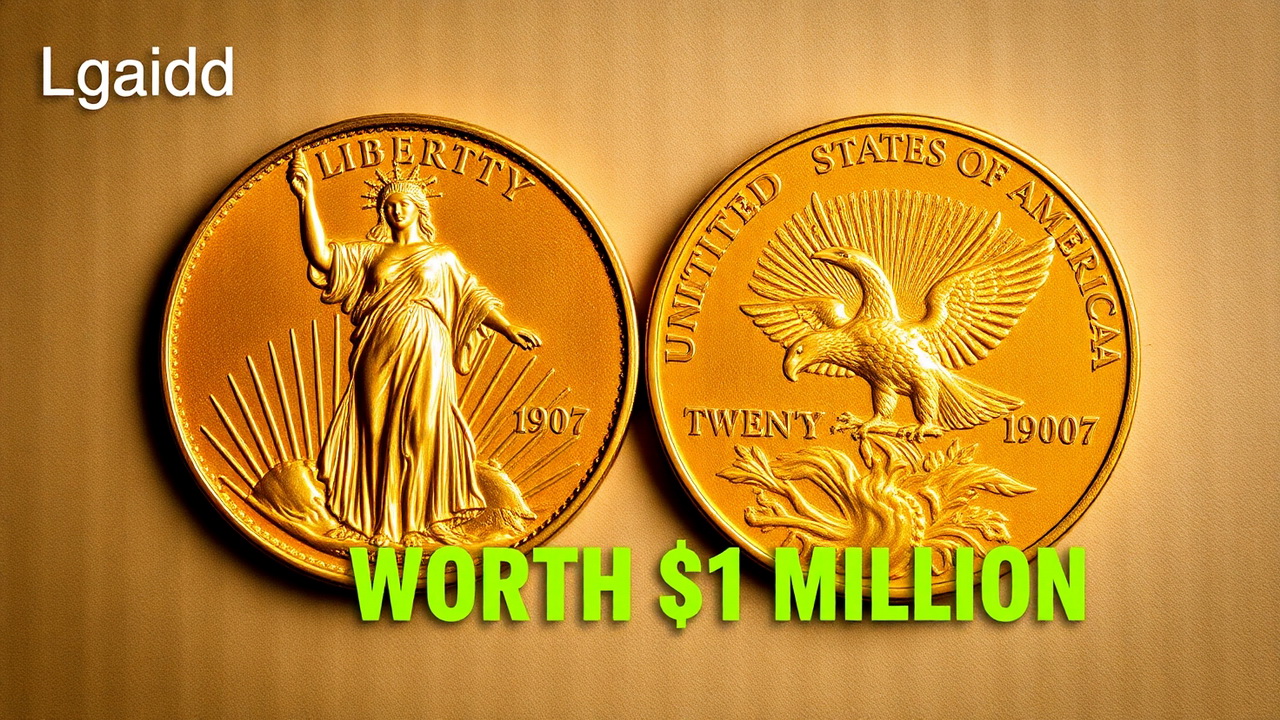Rare Coins Worth Up to $1 Million: Rare coins have captivated collectors for generations, with some fetching astonishing sums at auction. Among these treasures, Lincoln pennies stand out for their historical significance and the fascination they evoke in numismatists. First minted in 1909 to honor Abraham Lincoln, these copper coins have become iconic pieces of American history. While most are worth only a cent, a few rare variations have reached extraordinary values, with some selling for up to $1 million.
This article delves into the fascinating world of rare Lincoln pennies, highlighting what makes them valuable, the most coveted examples, and practical tips for identifying these hidden gems. Whether you’re an avid collector or simply curious about the coins jingling in your pocket, this guide offers insights into these historical rarities.
The Most Valuable Lincoln Pennies
Below is a quick overview of some of the highest-valued Lincoln pennies:
| Year | Mint Mark | Description | Estimated Value |
|---|---|---|---|
| 1943 | D | Bronze Planchet Error | $1.7 million |
| 1943 | S | Bronze Planchet Error | $1 million |
| 1958 | None | Doubled Die Obverse | $1.1 million |
| 1944 | S | Steel Planchet Error | $399,637 |
| 1943 | None | Bronze Planchet Error | $282,000 |
The Legacy of Lincoln Pennies
Lincoln pennies are more than just currency; they are historical artifacts that reflect evolving designs and production techniques over the decades. First minted in 1909, these coins have undergone significant changes in design and composition.
Key Design Periods:
- 1909 to 1958: Wheat Reverse
These pennies feature Lincoln’s profile on the obverse and two wheat stalks on the reverse, primarily made from bronze. - 1959 to 2008: Memorial Reverse
To honor the construction of the Lincoln Memorial, the reverse design was updated to depict this iconic structure. - 2009 Bicentennial Editions
Four unique reverse designs commemorated Lincoln’s 200th birth anniversary, each depicting key moments from his life.
During World War II, copper was conserved for military purposes, and pennies were temporarily made from steel. These wartime changes, along with rare errors, have made certain Lincoln pennies highly sought after.
Factors That Make a Coin Valuable
Not every penny from the past is worth a fortune. Several key factors determine a coin’s value:
- Rarity
Coins produced in small quantities or with unique errors are inherently more valuable. - Condition
Uncirculated coins with no signs of wear or damage are significantly more desirable. - Historical Significance
Coins tied to significant historical events or production errors gain immense value. - Collector Demand
Popular coins with high demand often command steep prices at auctions.
Legendary Lincoln Pennies
The 1943 Bronze Planchet Pennies
In 1943, the U.S. Mint switched to steel planchets coated in zinc to conserve copper for the war effort. However, a few pennies were mistakenly struck on leftover bronze planchets from 1942, creating some of the rarest Lincoln pennies:
- 1943-D Bronze Penny: The only known specimen sold for $1.7 million in 2010.
- 1943-S Bronze Penny: Another rare example fetched $1 million in 2012.
1958 Doubled Die Obverse
This rare error coin displays a doubled image of the obverse lettering and numbers. With only three known examples, one sold for $1.1 million in 2023, making it a prized possession for collectors.
1944 Steel Planchet Pennies
In 1944, copper planchets returned for penny production, but a small number were accidentally struck on leftover steel planchets. The 1944-S Steel Penny, one of the rarest examples, sold for $399,637.
How to Spot a Rare Lincoln Penny
Identifying a rare coin requires careful observation and some basic tools:
- Examine the Date and Mint Mark
Look for key years, such as 1943 and 1944, and note the mint mark (D for Denver, S for San Francisco, or none for Philadelphia). - Weigh the Coin
Use a digital scale to determine its weight. Bronze pennies weigh 3.11 grams, while steel pennies weigh 2.7 grams. - Test with a Magnet
Steel pennies are magnetic, while bronze pennies are not. - Inspect for Errors
Look for doubling, off-center strikes, or unusual marks.
Preserving Your Coins
Proper care can significantly enhance the value of rare coins:
- Handle Gently: Hold coins by the edges to avoid fingerprints or scratches.
- Store Safely: Use non-acidic holders or albums to protect them from air and moisture.
- Avoid Cleaning: Cleaning coins can reduce their value by removing the natural patina.
- Get Professional Grading: Certification from services like PCGS or NGC can authenticate and increase a coin’s value.
Tips for Beginners
If you’re new to coin collecting, consider these tips:
- Start with affordable coins featuring minor errors.
- Learn about coin history and production techniques.
- Join numismatic forums and clubs for advice and networking.
- Explore online auctions for hidden treasures.
FAQs
What makes a Lincoln penny rare?
A unique error, low production numbers, or historical significance can make a Lincoln penny rare.
How can I determine if my penny is valuable?
Check the date and mint mark, weigh the coin, and inspect for errors. Professional grading can confirm its worth.
Are all old pennies valuable?
No, most older pennies hold only face value unless they have unique features or are in mint condition.
Rare Lincoln pennies offer a fascinating blend of history, artistry, and the thrill of discovery. Whether you’re a seasoned collector or a curious beginner, these coins can transform loose change into a potential fortune. If you suspect you’ve found a rare penny, take the time to research and authenticate it—it might just be a million-dollar treasure.
